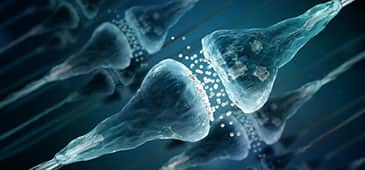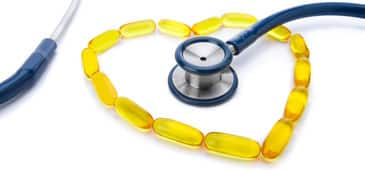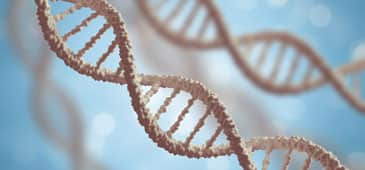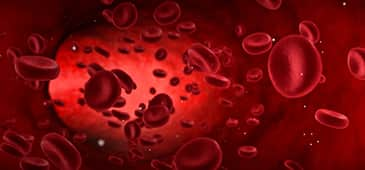
What's Hot
What's Hot
News flashes are posted here frequently to keep you up-to-date with the latest advances in health and longevity. We have an unparalleled track record of breaking stories about life extension advances.
Vitamin C supplementation shortens ICU stays
 March 29 2019. The April 2019 issue of Nutrients published the findings of a meta-analysis which concluded that the administration of vitamin C to intensive care unit (ICU) patients shortened the patients’ stay by an average of 7.8%.
March 29 2019. The April 2019 issue of Nutrients published the findings of a meta-analysis which concluded that the administration of vitamin C to intensive care unit (ICU) patients shortened the patients’ stay by an average of 7.8%.
Dr Harri Hemilä of the University of Helsinki, Finland, and Dr Elizabeth Chalker of the University of Sydney, Australia, selected 12 controlled trials that included a total of 2,004 patients for their analysis. While subjects who received orally administered vitamin C had an ICU stay that was 7.8% shorter than that of patients who did not receive the vitamin, patients in six trials who received an average dose of two grams per day of vitamin C had their ICU stay reduced by 8.6%.
Among trials that included patients who required more than 24 hours mechanical ventilation, treatment with vitamin C was associated with an 18.2% reduction in ventilation duration. The finding suggests that vitamin C’s benefits might be greater for patients who have more severe illnesses.
"Vitamin C is a safe, low-cost essential nutrient,” Drs Hemilä and Chalker commented. “Given the consistent evidence from the trials published so far, vitamin C might be administered to ICU patients, although further studies are needed to find out optimal protocols for its administration. A few common cold studies have indicated that there may be a linear dose response for vitamin C on common cold duration for up to 6 and 8 grams per day. Evidently the dose response for doses higher than 2 grams per day should also be investigated for ICU patients."“Vitamin C costs only pennies per gram, whereas one day in the ICU may cost thousands of dollars; therefore, an 8% decrease in ICU stay from the administration of 2 grams/day of vitamin C warrants further research,” the authors concluded.
—D Dye
Calcium, vitamin D supplementation lacking in osteoporosis patients
 March 27 2019. A study presented at the 2019 Annual Meeting of the American Academy of Orthopaedic Surgeons revealed that the majority of men and women with osteoporosis are not supplementing their diets with calcium and vitamin D. Even more concerning is the fact that over half of osteoporosis patients with a history of hip fracture also failed to receive the bone-building supplements.
March 27 2019. A study presented at the 2019 Annual Meeting of the American Academy of Orthopaedic Surgeons revealed that the majority of men and women with osteoporosis are not supplementing their diets with calcium and vitamin D. Even more concerning is the fact that over half of osteoporosis patients with a history of hip fracture also failed to receive the bone-building supplements.
“In general, osteoporosis patients are largely undertreated and not adequately managed with prescription medication or nutrient supplementation,” observed researcher Evan D. Nigh of the University of Miami Miller School of Medicine. “We hypothesized that patients with a history of hip fracture would have higher supplementation rates because they were actively seeing their primary care and orthopedic physicians for follow-up appointments, and they would be personally motivated to prevent future fractures, since they are now at a greater risk. However, the compliance rates among this subset of osteoporosis patients was surprisingly low.”
The study included 1,065 men and women with osteoporosis who were enrolled in the National Health and Nutrition Examination Survey. Two hundred four subjects had a history of hip fracture. It was found that 80.8% of the subjects were not receiving calcium and vitamin D. Among those who reported hip fractures, 58% did not receive the necessary nutrients. Non-Caucasian Mexican-Americans were least likely to receive treatment.
“This study has highlighted multiple opportunities to improve osteoporosis treatment and further efforts are warranted to identify specific strategies to address the observed racial disparity,” commented study coauthor Sheila Conway, MD, who is an Associate Professor of Orthopedic Surgery at the Miller School of Medicine.
“This paper should serve as a call-to-action to orthopedic surgeons to ensure that our osteoporotic hip fracture population receives adequate medical treatment to maximize their post-operative recovery,” added coauthor Spencer Summers, MD.
—D Dye
Calorie restriction linked to immune modulation
 March 25 2019. An article published on March 21, 2019 in Cell Metabolism establishes an association between lower calorie intake and optimal immune response in the roundworm Caenorhabditis elegans. The findings provide one potential mechanism for the life-extending benefits of calorie restriction.
March 25 2019. An article published on March 21, 2019 in Cell Metabolism establishes an association between lower calorie intake and optimal immune response in the roundworm Caenorhabditis elegans. The findings provide one potential mechanism for the life-extending benefits of calorie restriction.
"Modulating immune activity is an important aspect of dietary restriction," commented lead researcher Keith Blackwell, MD, PhD, of Joslin Diabetes Center. "And it is important for longevity regulation and, in this context, increasing lifespan."
Dr Blackwell’s team discovered that calorie restriction dampens innate immunity by decreasing the activity of a regulatory protein called p38. Innate immunity is that part of the immune system that is the first line of defense against the intrusion against foreign microorganisms. During aging, the innate immune system is often overactive, resulting in chronic inflammation.
While inactivation of p38 prevented calorie restriction from extending lifespan and affecting innate immunity, activation of p38 at a lower level than normal in turn activated genetic pathways that lower innate immune response to a healthy level. "That was the most surprising thing we found,” Dr Blackwell remarked. “The pathway was down regulated even though it was critical."
"People looked at what happens to immunity to aging in humans, but no one had ever looked in any organism at whether modulating immunity or its activities is involved in lifespan extension or can be beneficial as part of an anti-aging program," Dr Blackwell announced. "This is really an emerging field in mammals now, so called immunometabolism--the idea that there are ancient links between metabolism and immunity. We were able to show in this really very primitive immune system that it is regulated metabolically and affects lifespan and health independently of an antipathogen function."
"The ultimate goal is to be able to manipulate healthy lifespan in a person," he concluded.—D Dye
Increased calcium intake associated with lower risk of progression to late AMD
 March 22 2019. A study reported on March 21, 2019 in JAMA Ophthalmology found an association between greater intake of calcium and a lower risk of progression to late age-related macular degeneration (AMD) among participants in the Age-Related Eye Disease Study (AREDS), which evaluated the effects of nutritional supplements on cataracts and AMD from 1992 to 2001. Late AMD is a stage of AMD characterized by vision loss, and includes geographic atrophy (dry) AMD, which involves a breakdown of light-sensitive cells in the macula and neovascular (wet) AMD, which involves new blood vessel growth.
March 22 2019. A study reported on March 21, 2019 in JAMA Ophthalmology found an association between greater intake of calcium and a lower risk of progression to late age-related macular degeneration (AMD) among participants in the Age-Related Eye Disease Study (AREDS), which evaluated the effects of nutritional supplements on cataracts and AMD from 1992 to 2001. Late AMD is a stage of AMD characterized by vision loss, and includes geographic atrophy (dry) AMD, which involves a breakdown of light-sensitive cells in the macula and neovascular (wet) AMD, which involves new blood vessel growth.
The study included 4,751 AREDS participants with intermediate AMD, late AMD in one eye, or no AMD upon enrollment, who were followed until 2005. Calcium intake from food and supplements was calculated from responses to questionnaires. Eye examinations were conducted at the beginning of the trial and twice yearly until its conclusion, following which the subjects were examined yearly through the follow-up period.
Among those whose intake of calcium from food was among the top 20% of participants, there was a 27% lower risk of developing late AMD in comparison with subjects whose intake was among the lowest 20%. When calcium supplementation was evaluated, participants whose intake was among the top one-third had a 30% lower risk of developing neovascularization than those who did not use calcium supplements. Among women, the risk of developing neovascular AMD was 33% lower among the top third compared to those who did not use calcium supplements. (There were not enough men in the study who used calcium supplements to permit an accurate analysis.)
“In this secondary analysis, higher levels of dietary and supplementary calcium intake were associated with lower incidence of progression to late AMD in AREDS participants,” Alanna K. Tisdale, MD, MPH, and colleagues conclude.
—D Dye
Omega-3 intake may be associated with decreased asthma symptoms
 March 20 2019. Research reported on December 25, 2018 in the International Journal of Environmental Research and Public Health reveals an association between higher levels of omega-3 fatty acids and a lower risk of asthma symptoms.
March 20 2019. Research reported on December 25, 2018 in the International Journal of Environmental Research and Public Health reveals an association between higher levels of omega-3 fatty acids and a lower risk of asthma symptoms.
"Around 334 million people worldwide have asthma, and about a quarter of a million people die from it every year,” stated coauthor Andreas L. Lopata of James Cook University’s Australian Institute of Tropical Health and Medicine. “In Australia, one in nine have asthma (about 2.7 million), and among Indigenous Australians this rate is almost twice as high.”
The study included 642 employees of a fish processing factory who had a higher than average intake of fish. Eight percent had current asthma according to the European Committee Respiratory Health Survey definition, 11% had asthma symptoms and 26% experienced nonspecific bronchial hyperresponsiveness (a hallmark of asthma also associated with COPD). Blood samples were analyzed for levels of omega-3, omega-6 and omega-9 fatty acids.
"We found that certain types of omega-3 (from marine oils) were significantly associated with a decreased risk of having asthma or asthma-like symptoms by up to 62%, while high omega-6 consumption (from vegetable oils) was associated with an increased risk by up to 67%," Dr Lopata reported.
"There is an increasing consumption of what is known as the omega-6 polyunsaturated fatty acid found in vegetable oils and a decline in consumption of omega-3 polyunsaturated fatty acids, which is mainly found in marine oil,” he explained. “Crudely, there has been a global move from fresh fish to fast food.”
"Asthma incidence has nearly doubled in the past 30 years and about half of asthma patients do not get any benefit from the drugs available to treat it,” Dr Lopata observed. “So, there's a growing interest in non-drug treatment options."
—D Dye
Vitamin B12 deficiency could increase risk of infection
 March 18 2019. An article published on March 13, 2019 in PLoS Genetics describes a study involving the roundworm Caenorhabditis elegans (C. elegans) which uncovered a link between insufficient dietary intake of vitamin B12 and a greater risk of potentially lethal infections. Caenorhabditis elegans are similar to humans in their need to obtain vitamin B12 by dietary means.
March 18 2019. An article published on March 13, 2019 in PLoS Genetics describes a study involving the roundworm Caenorhabditis elegans (C. elegans) which uncovered a link between insufficient dietary intake of vitamin B12 and a greater risk of potentially lethal infections. Caenorhabditis elegans are similar to humans in their need to obtain vitamin B12 by dietary means.
"We used C. elegans to study the effect of diet on a host and found that one kind of food was able to dramatically increase resistance to multiple stressors -- like heat and free radicals -- as well as to pathogens," reported lead researcher Natasha Kirienko, who is an assistant professor of biosciences at Rice University in Houston.
By feeding C. elegans diets consisting of either the OP50 or HT115 strains of the bacteria E. coli, Dr Kirienko’s team found that E. Coli HT115, which provided vitamin B12, improved the worms’ survival after exposure to the bacteria Pseudomonas aeruginosa or Enterococcus faecalis OG1RF. It was determined that a lack of vitamin B12 lowers the worms’ ability to metabolize branched chain amino acids (BCAAs), resulting in an accumulation of partially metabolized BCAAs that damage the mitochondria of the cells. Conversely, increasing vitamin B12 availability improved mitochondrial homeostasis and resistance to infection.
"The key difference between the two diets is the ability of HT115 and OP50 to acquire B12 from the environment," commented coauthor Alexey Revtovich, a research scientist. "We showed that HT115 is far more efficient at this."
"Some labs use OP50 as their standard food, and others use HT115 or even another strain of E. coli," observed coauthor Ryan Lee. "Our results show there are significant metabolic differences between these diets, and it's likely those differences could contribute to substantial uncertainty in research outcomes."
—D Dye
Amino acids associated with longer life span in roundworm
 March 15 2019. A report published on March 7, 2019 in the journal PLoS Genetics documents a life-extending benefit for the amino acids glycine and serine in the roundworm Caenorhabditis elegans (C. elegans).
March 15 2019. A report published on March 7, 2019 in the journal PLoS Genetics documents a life-extending benefit for the amino acids glycine and serine in the roundworm Caenorhabditis elegans (C. elegans).
“To date the role of glycine has not been systematically defined in animal models of longevity,” write Yasmine J. Liu and her colleagues at the University of Amsterdam. “In this study, we build upon our previous observations that suggest glycine accumulation in aging animals may play a unique and as-of-yet unexplored role in the regulation of eukaryote lifespan.”
While concentrations of most amino acids decline during aging in C. elegans, the exception is glycine, which continues to accumulate. It was discovered that the expression of genes involved in glycine degradation was reduced during the worms’ late adulthood while gene expression involved in glycine synthesis remained unchanged during aging. In long-lived C. elegans strains, glycine levels were significantly higher during aging in comparison to levels measured during larval stages.
When the worms were given low amounts of glycine, an increase in median lifespan of 7.7% to 19.2% occurred in comparison with untreated controls. A similar effect was observed when C. elegans were supplemented throughout their lives or during adulthood with serine, an amino acid that is a precursor of glycine. “Taken together, we suggest a model whereby both glycine and serine supplementation stimulate longevity in a methionine cycle-dependent fashion and through common signaling pathways,” the authors write.
Although some glycine is made in the body from the amino acid serine, evidence exists that the amount synthesized combined with the small quantity provided by the diet may be insufficient for the body’s metabolic needs. It has been suggested that glycine should be classified as a semi-essential amino acid and that supplementation may be of benefit.
—D Dye
Nicotinamide riboside could find a use in treatment of leukemia and lymphoma
 March 13 2019. The March 7, 2019 issue of Cell Stem Cell published the finding of a team from the Ludwig Institute for Cancer Research that nicotinamide riboside, a form of vitamin B3, can increase the production of hematopoietic stem cells, which are the precursors of various blood cells in the body. These stem cells are now used in the treatment of leukemia and lymphoma, in a process by which cancerous blood stem cells are removed and replaced with healthy cells. However, due to the effects of stress, the ability of new hematopoietic stem cells to divide is slowed, resulting in insufficient hematopoietic stem cell replenishment and death of the patient in some cases.
March 13 2019. The March 7, 2019 issue of Cell Stem Cell published the finding of a team from the Ludwig Institute for Cancer Research that nicotinamide riboside, a form of vitamin B3, can increase the production of hematopoietic stem cells, which are the precursors of various blood cells in the body. These stem cells are now used in the treatment of leukemia and lymphoma, in a process by which cancerous blood stem cells are removed and replaced with healthy cells. However, due to the effects of stress, the ability of new hematopoietic stem cells to divide is slowed, resulting in insufficient hematopoietic stem cell replenishment and death of the patient in some cases.
To meet the significant demands of rebuilding blood cells, the mitochondria (energy-producing organelles within a cell) of hematopoietic stem cells accelerate a fuel-generating process known as oxidative phosphorylation. This process increases mitochondrial stress and premature aging of the stem cells. Corresponding author Olbia Naveiras and colleagues discovered that exposure of human and mouse hematopoietic stem cells to nicotinamide riboside boosted the process by which stressed mitochondria are recycled to clear the way for new replacements. This improves the ability of the stem cells to divide and produce new blood cells.
In mice that had been exposed to radiation that resulted in a significant reduction of blood cells, the addition of nicotinamide riboside to the diet resulted in an 80% improvement in survival and better blood recovery. In immunodeficient mice, white blood cell production increased as a result of nicotinamide riboside supplementation.
"We expect nicotinamide riboside and other mitochondrial modulators to become a complementary approach for increasing stem cell fitness and accelerating blood production, either through dietary supplementation or pharmacological administration," Dr. Naveiras predicted.
—D Dye
Olive oil may help maintain normal blood viscosity
 March 11 2019. A presentation at the American Heart Association's Epidemiology and Prevention | Lifestyle and Cardiometabolic Health Scientific Sessions 2019 revealed an association between regular consumption of olive oil and a reduction in blood platelet activity in a study of healthy, obese adults, who are at risk of developing cardiovascular disease. Increased blood platelet activation increases blood clot formation, which can impair blood flow.
March 11 2019. A presentation at the American Heart Association's Epidemiology and Prevention | Lifestyle and Cardiometabolic Health Scientific Sessions 2019 revealed an association between regular consumption of olive oil and a reduction in blood platelet activity in a study of healthy, obese adults, who are at risk of developing cardiovascular disease. Increased blood platelet activation increases blood clot formation, which can impair blood flow.
"To our knowledge, this is the first study to assess the effects of dietary composition, olive oil specifically, on platelet function in obese patients," announced researcher Ruina Zhang, BS, who is a medical student at New York University (NYU).
The current study involved 63 nondiabetic subjects with no known cardiovascular disease who were part of a larger prospective study of platelet function in obesity. Dietary questionnaire responses provided information concerning the frequency of olive oil intake. Platelet activate was assessed via flow cytometry.
Among subjects whose intake of olive oil occurred once or less per week, platelet activation was significantly higher than the level of activation associated with consuming olive oil one to three times per week. Olive oil consumption four or more times per week was associated with an even greater benefit.
"People who are obese are at increased risk of having a heart attack, stroke or other cardiovascular event, even if they don't have diabetes or other obesity-associated conditions,” noted lead study author Sean P. Heffron, MD, MS, MSc, who is an assistant professor at NYU School of Medicine and the NYU Center for the Prevention of Cardiovascular Disease. “Our study suggests that choosing to eat olive oil may have the potential to help modify that risk, potentially lowering an obese person's threat of having a heart attack or stroke."
—D Dye
Carrot and green tea compounds reverse Alzheimer's symptoms in mice
 March 08 2019. The February 22, 2019 issue of the Journal of Biological Chemistry published the finding of researchers at the University of Southern California of reversal of Alzheimer’s-like symptoms in mice given compounds found in carrots and green tea.
March 08 2019. The February 22, 2019 issue of the Journal of Biological Chemistry published the finding of researchers at the University of Southern California of reversal of Alzheimer’s-like symptoms in mice given compounds found in carrots and green tea.
Using a strain of mice genetically programmed to develop Alzheimer’s disease, a team led by Terrence Town, who is a professor of physiology and neuroscience at the Keck School of Medicine at USC's Zilkha Neurogenetic Institute, gave one-year-old mice a placebo, epigallocatechin-3-gallate (EGCG) from green tea, ferulic acid (which occurs in carrots, tomatoes, oats and rice) or both EGCG and ferulic acid daily for three months. At the end of the treatment period, mice that received EGCG plus ferulic acid exhibited improvement in novel object recognition and maze tasks along with a reduction of brain amyloid beta deposits in comparison with those who received EGCG or ferulic acid alone. Treatment with both compounds was also associated with an increase in factors that indicate a shift toward nonamyloidogenic amyloid precursor protein processing. Neuroinflammation, oxidative stress and synaptotoxicity were all lower in association with combination treatment.
"After three months, combination treatment completely restored working memory and the Alzheimer's mice performed just as well as the healthy comparison mice," Dr Town reported. "You don't have to wait 10 to 12 years for a designer drug to make it to market; you can make these dietary changes today. I find that very encouraging."
“Combination therapy for Alzheimer’s disease has garnered attention following a recent National Institute on Aging mandate, but this approach has not yet been fully validated,” the authors write. “Our findings offer preclinical evidence that combined treatment with EGCG and ferulic acid is a promising Alzheimer’s disease therapeutic approach.”
—D Dye
Mediterranean diet rapidly boosts athletic endurance
 March 06 2019. A study reported on February 13, 2019 in the Journal of the American College of Nutrition found that a Mediterranean diet was associated with improvement in athletes’ endurance after just four days. The diet is characterized by greater intake of fruit and vegetables, nuts, olive oil and whole grains, and reduced consumption of red and processed meat, trans and saturated fats and refined sugars.
March 06 2019. A study reported on February 13, 2019 in the Journal of the American College of Nutrition found that a Mediterranean diet was associated with improvement in athletes’ endurance after just four days. The diet is characterized by greater intake of fruit and vegetables, nuts, olive oil and whole grains, and reduced consumption of red and processed meat, trans and saturated fats and refined sugars.
The study included 11 recreationally active men and women who ran five kilometers on a treadmill after consuming a Mediterranean diet for four days and the same distance after four days on a Western diet that was high in fat, sodium and refined sugar, and low in fruit and vegetables. The two trials were separated by a period of nine to 16 days.
Despite similar heart rates and perceived exertion, participants completed the five kilometer run 6% faster after the Mediterranean diet was consumed in comparison with the Western diet. The researchers suggested that anti-inflammatory and antioxidant effects associated with the Mediterranean diet could be mechanisms supporting the observed exercise enhancement.
"Many individual nutrients in the Mediterranean diet improve exercise performance immediately or within a few days,” commented lead researcher Edward Weiss, PhD, who is a professor of nutrition and dietetics at Saint Louis University. “Therefore, it makes sense that a whole dietary pattern that includes these nutrients is also quick to improve performance. However, these benefits were also quickly lost when switching to the Western diet, highlighting the importance of long-term adherence to the Mediterranean diet."
"This study provides evidence that a diet that is known to be good for health is also good for exercise performance," he added. "Like the general population, athletes and other exercise enthusiasts commonly eat unhealthy diets. Now they have an additional incentive to eat healthy."
—D Dye
Genetic manipulation of worm species lengthens life and improves offspring health
 March 04 2019. The long-held belief that a greater life span involves a trade-off with reproductive fitness has been dealt a blow by findings from a study appearing on March 4, 2019 in the journal Evolution Letters. Alexei Maklakov and colleagues found that reducing the expression of the gene DAF-2, which is associated with aging in the roundworm Caenorhabditis elegans, more than doubled the worms’ lifespan. DAF-2 is an insulin receptor gene that plays a role in the worms’ insulin/insulin-like growth factor 1 (IFG-1) signaling pathway which controls growth, longevity and reproduction. Since DAF-2 is needed for development, the researchers permitted the worms to reach reproductive maturity prior to switching off the gene. Offspring of the worms exhibited improved fitness and had greater fertility, indicating that they, too, benefitted from DAF-2 knock down.
March 04 2019. The long-held belief that a greater life span involves a trade-off with reproductive fitness has been dealt a blow by findings from a study appearing on March 4, 2019 in the journal Evolution Letters. Alexei Maklakov and colleagues found that reducing the expression of the gene DAF-2, which is associated with aging in the roundworm Caenorhabditis elegans, more than doubled the worms’ lifespan. DAF-2 is an insulin receptor gene that plays a role in the worms’ insulin/insulin-like growth factor 1 (IFG-1) signaling pathway which controls growth, longevity and reproduction. Since DAF-2 is needed for development, the researchers permitted the worms to reach reproductive maturity prior to switching off the gene. Offspring of the worms exhibited improved fitness and had greater fertility, indicating that they, too, benefitted from DAF-2 knock down.
"It is often thought that we age because of a slow accumulation of unrepaired cellular damage in our bodies, and that aging is the result of energy trade-offs between growth, reproduction and survival,” Dr Maklakov commented. "An emerging new theory is that the genes that age us are programmed to make us grow and reproduce in early life, but when their function ‘runs-on’ unabated in later life it starts causing problems. If this is true, then we should be able to stay younger for longer by reducing high levels of gene signaling, or 'shutting down' these genes in later life."
"Ageing can result from accumulation of unrepaired damage with age,” he admitted. “However, it can also result simply from suboptimal regulation of gene expression in late-life. Understanding the importance of these two processes is important both for our understanding of the evolution of aging, and for the applied programs aimed at lifespan extension. We want to establish which of the two processes is more prevalent across the tree of life."
—D Dye
Shilajit supplementation helps maintain muscle strength during exercise
 March 01 2019. A report appearing February 6, 2019 in the Journal of the International Society of Sports Nutrition documents the outcome of a study of men involved in recreational sports who experienced better muscle strength during exercise-induced fatigue and exhibited decreased levels of the amino acid hydroxyproline (which is a biomarker of collagen degradation) in association with supplementation with a daily dose of 500 milligrams shilajit. Shilajit is an exudate of the sedimentary rocks of the Himalayas and other mountains and is known in Ayurvedic Medicine as a super-vitalizer.
March 01 2019. A report appearing February 6, 2019 in the Journal of the International Society of Sports Nutrition documents the outcome of a study of men involved in recreational sports who experienced better muscle strength during exercise-induced fatigue and exhibited decreased levels of the amino acid hydroxyproline (which is a biomarker of collagen degradation) in association with supplementation with a daily dose of 500 milligrams shilajit. Shilajit is an exudate of the sedimentary rocks of the Himalayas and other mountains and is known in Ayurvedic Medicine as a super-vitalizer.
The study included 63 men who were involved in such sports as basketball, flag-football, softball, and rugby. Subjects received a placebo, 250 milligrams (mg) shilajit or 500 mg shilajit daily for eight weeks. Prior to supplementation and at the end of the supplementation period, the participants’ exercise performance was evaluated for maximal voluntary isometric contraction strength, concentric peak torque, fatigue-induced percent decline in strength and serum hydroxyproline.
At the end of the study, the decline in maximal voluntary isometric contraction strength subsequent to fatigue was less among participants who received the higher dose of shilajit than among those who received the lower dose. An analysis of subjects whose pre-supplementation hydroxyproline values were among the upper 50th percentile revealed a decrease in hydroxyproline, which indicates better connective tissue integrity, among those who received the higher shilajit dose.
“The present study is the first to examine the effects of PrimaVie® Shilajit supplementation on fatigue-related performance outcomes using a resistance exercise model,” authors Joshua L. Keller of the University of Nebraska and colleagues announce. “Future investigations should further examine the potential ergogenic effects of Shilajit supplementation under various exercise conditions.”
—D Dye

